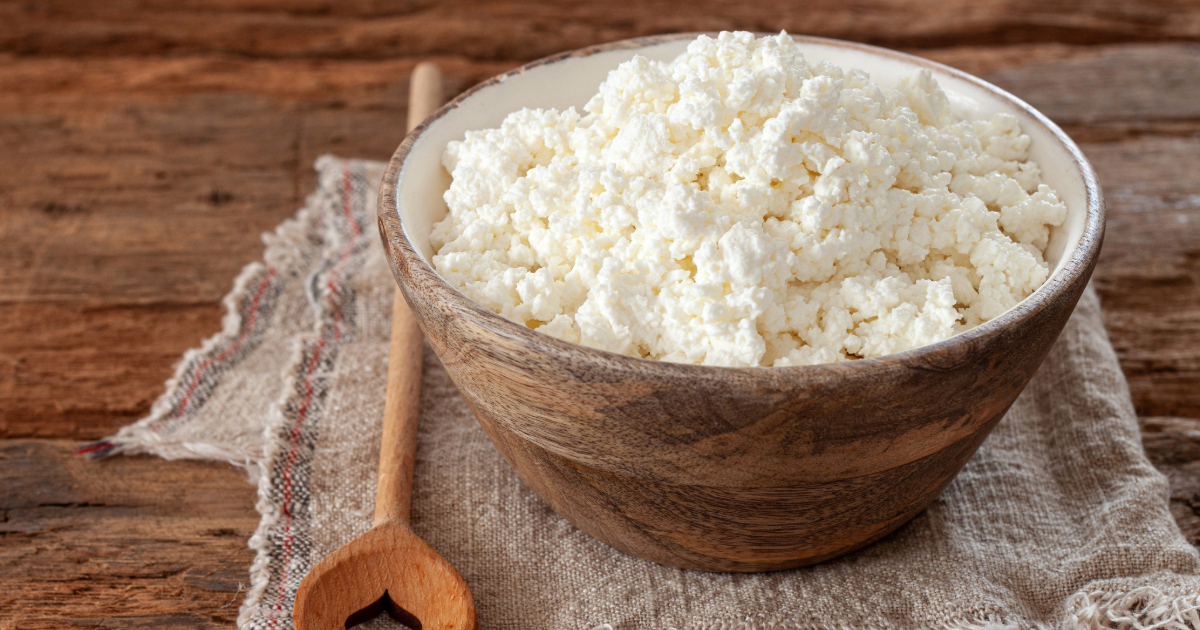Farmer’s cheese and mozzarella are two popular varieties of cheese, but they have some key differences.

Where Do Farmer’s Cheese and Mozzarella Come From?
Farmer’s cheese has humble beginnings - it originated on farms as a way to use up leftover milk after making butter. The simple recipe was brought to America by English settlers. Mozzarella also has old roots, tracing back to Italy where it's traditionally made using the pasta filata technique of stretching and pulling the curds into elastic pieces.
So while both types of cheeses have been around for a while, farmer’s cheese was born out of thriftiness while mozzarella came from specialized Italian cheesemaking methods.
Key Takeaway: Farmer's cheese was first made by farmers, while mozzarella originated in Italy.
How Are Farmer’s Cheese and Mozzarella Made?
The production process also sets these cheeses apart. Farmer’s cheese is made by adding bacterial culture to milk to acidify it, cutting the curds, draining the whey, and pressing the curds into a mold. Mozzarella involves stretching and pulling the curds in hot water until elastic, then shaping.
So farmer's cheese uses a simpler curd cutting approach while mozzarella relies on the pasta filata technique. The ingredients can also vary - farmer's cheese tends to just use milk while mozzarella may incorporate additional ingredients.
Key Takeaway: Farmer's cheese uses a basic curd cutting method while mozzarella is made with the specialized pasta filata stretching technique.
How Do The Textures Compare?
The different production processes lead to very different textures. Farmer’s cheese has as soft, spreadable texture, usually falling somewhere between fresh mozzarella and soft cheddar. It should be sliceable but also able to spread onto a cracker or bread.
Mozzarella on the other hand is famously elastic and chewy, thanks to the pasta filata process. It stretches easily into long strings and has a smooth, supple feel. So farmer's cheese is softer and easier to spread while mozzarella is more elastic and chewy.
Key Takeaway: Farmer's cheese tends to have a soft, sliceable, spreadable texture compared to the stringy, chewy elasticity of mozzarella.
How Do The Flavors Compare?
The flavors of these two cheeses also differ quite a bit. Farmer’s cheese is generally mild and tangy, with a creamy dairy flavor. It's less acidic than cottage cheese but not as sweet as cream cheese.
Mozzarella also has a delicate, milky taste, but it lacks the tangy flavor notes common in farmer’s cheese. Fresh mozzarella in particular has a very clean, light flavor profile.
So in essence, farmer's cheese delivers more tangy, creamy flavors while mozzarella focuses more on fresh, subtle milky notes.
Key Takeaway: Farmer's cheese is tangy yet creamy flavored, while mozzarella showcases delicate, milky flavors instead.
How Are They Used in Cooking?
Because of their differing flavors and textures, farmer’s cheese and mozzarella fill different roles in the kitchen.
Farmer’s cheese is very versatile - its mild flavor allows it to adapt in both sweet and savory dishes. It can be used baked into desserts like cheesecake or folded into pierogi fillings. And it substitutes well for ricotta or cottage cheese in recipes.
Mozzarella is best known for Italian dishes like pizza, Caprese salad, and ravioli filling. Its meltability and mild milky notes make it perfect for shining through without overpowering other ingredients.
So farmer's cheese is adaptable as either a sweet or savory ingredient. Mozzarella finds its niche in Italian cuisine thanks to its specialty characteristics.
Key Takeaway: Farmer's cheese works well in both sweet and savory dishes while mozzarella fits best in Italian recipes.
What Are Good Substitutes?
If you don’t have one of these cheeses on hand, several alternatives make decent substitutions.
Good swaps for farmer’s cheese include ricotta, goat cheese, paneer, queso blanco, or Neufchâtel. All have a similar soft, mild, tangy flavor profile.
For mozzarella, opt for other melting cheeses like provolone, Monterey Jack, fontina, or even a young mild cheddar. All offer moderate meltability with clean flavors.
So there are a variety of alternatives in a pinch, but none can perfectly mimic the exact taste and texture of these iconic cheeses.
Key Takeaway: Viable substitutes for farmer's cheese include ricotta, goat cheese, and paneer, while good alternatives for mozzarella are provolone, Monterey Jack, and fontina.
FAQs
What’s another name for farmer’s cheese?
Farmer’s cheese goes by various other names around the world, including twaróg (Poland), quark (Germany), and queso blanco (Spanish-speaking countries).
What milk is used to make them?
Farmer’s cheese is traditionally made from cow’s milk, but can use sheep or goat milk too. Mozzarella is most iconic when made from water buffalo milk, but cow’s milk is very common.
Can I freeze them?
Farmer’s cheese can be frozen, tightly wrapped, for 1-2 months. Fresh mozzarella has high moisture content so does not freeze as well - for best results, freeze baked mozzarella dishes.
Conclusion
While farmer’s cheese and mozzarella do share a common cheese heritage, they have distinct differences that set them apart.
Farmer’s cheese is characterized by its humble farm origins, spreadable soft texture, tangy yet mild flavor, and extreme versatility.
Mozzarella stands out for its Italian pasta filata roots, elastic chewiness, delicate dairy flavors, and specialty melting abilities.

